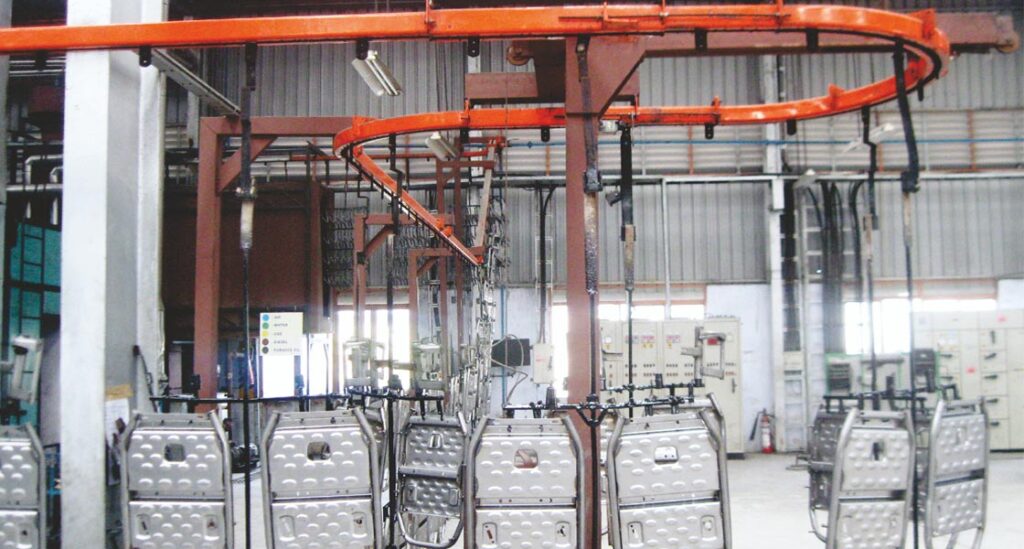Automotive Components
Speciality Conveyorised material transfer and storage solution for Automotives


Challenges
- Storing of components like seats, tyres and other components
- Intense dependency on human resources for material transfers
- Unergonomic operations with the manual handling of heavy components
- Faster transfer of material from one location to other
Advantages of overhead conveyor
- Ergonomic operations, zero human injuries
- Better throughout with ease of handling
- Continuous operations, with consistent movement of material
- Effective use of vertical height for storage purposes
Frequently Asked Questions
Overhead conveyors are the backbone of automotive plants because they maximize floor space in expensive, high-value assembly areas. They provide a continuous, synchronized flow for components and vehicle bodies through various stations like painting, assembly, and inspection, which is essential for achieving high-volume production targets.
Our systems are incredibly versatile and can be configured to handle:
Car Bodies/Body-in-White (BIW): Using specialized overhead skids or carriers.
Powertrain Components: Engines, transmissions, and axles on load bars or cradles.
Interiors: Seats, dashboards, and door panels on custom racks.
Small Parts: Wheels, tires, and batteries in totes or on shelves.
Yes. For paint shops, we recommend our Enclosed Track (XT) Conveyors. This design contains contaminants like lubricant and metal wear particles within the track, preventing them from falling onto the vehicle body below. This is critical for achieving a flawless, high-quality paint finish and is a standard in the automotive industry.
Absolutely. Our systems are engineered for high-capacity loads. We use heavy-duty chains, reinforced track structures, and robust drive systems to safely and reliably move the heaviest components, including entire vehicle bodies, through your facility.
Our Power & Free systems are ideal for this. They allow carriers to stop, accumulate, and switch tracks independently. This means you can run different car models on the same line, with each one routed to the correct workstation for its specific parts and processes. Carriers can also be raised, lowered, or tilted to provide ergonomic access for assemblers.
Our automotive conveyors are built for maximum uptime. We use premium-grade materials, hardened wearing surfaces, and components designed for continuous operation. Combined with a proactive maintenance plan, this ensures the system meets the demanding schedule of an automotive production line.
